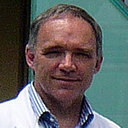Focal congenital hyperinsulinism managed by medical treatment: a diagnostic algorithm based on molecular genetic screening.
Mots clés
Abstrait
OBJECTIVE
Congenital hyperinsulinism (CHI) requires rapid diagnosis and treatment to avoid irreversible neurological sequelae due to hypoglycaemia. Aetiological diagnosis is instrumental in directing the appropriate therapy. Current diagnostic algorithms provide a complete set of diagnostic tools including (i) biochemical assays, (ii) genetic facility and (iii) state-of-the-art imaging. They consider the response to a therapeutic diazoxide trial an early, crucial step before proceeding (or not) to specific genetic testing and eventually imaging, aimed at distinguishing diffuse vs focal CHI. However, interpretation of the diazoxide test is not trivial and can vary between research groups, which may lead to inappropriate decisions. Objective of this report is proposing a new algorithm in which early genetic screening, rather than diazoxide trial, dictates subsequent clinical decisions.
RESULTS
Two CHI patients weaned from parenteral glucose infusion and glucagon after starting diazoxide. No hypoglycaemia was registered during a 72-h continuous glucose monitoring (CGMS), or hypoglycaemic episodes were present for no longer than 3% of 72-h. Normoglycaemia was obtained by low-medium dose diazoxide combined with frequent carbohydrate feeds for several years. We identified monoallelic, paternally inherited mutations in KATP channel genes, and (18) F-DOPA PET-CT revealed a focal lesion that was surgically resected, resulting in complete remission of hypoglycaemia.
CONCLUSIONS
Although rare, some patients with focal lesions may be responsive to diazoxide. As a consequence, we propose an algorithm that is not based on a 'formal' diazoxide response but on genetic testing, in which patients carrying paternally inherited ABCC8 or KCNJ11 mutations should always be subjected to (18) F-DOPA PET-CT.


